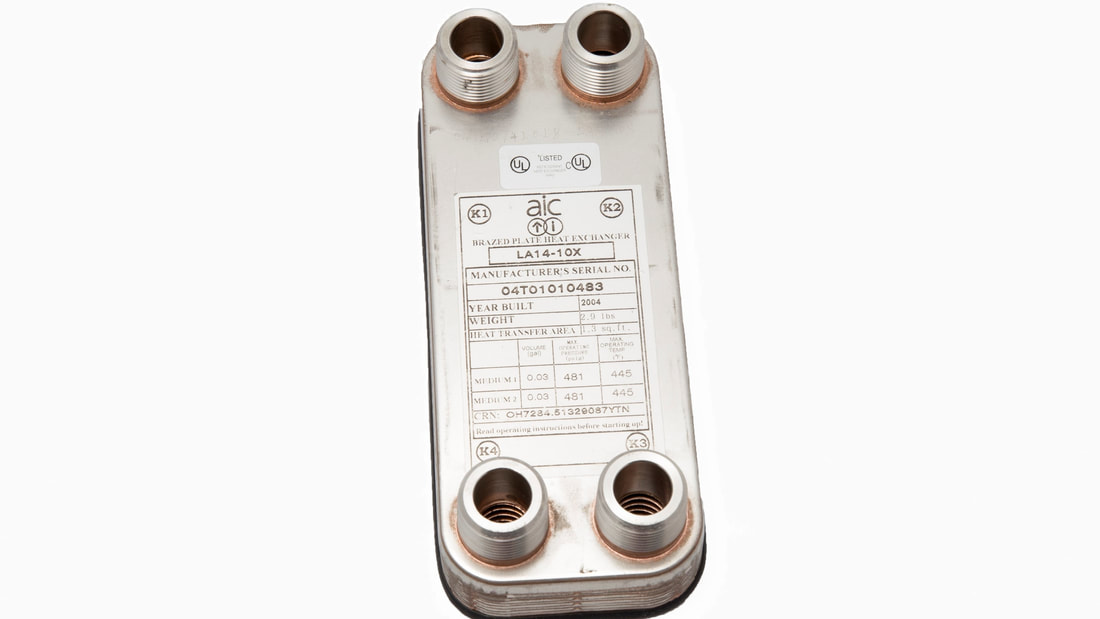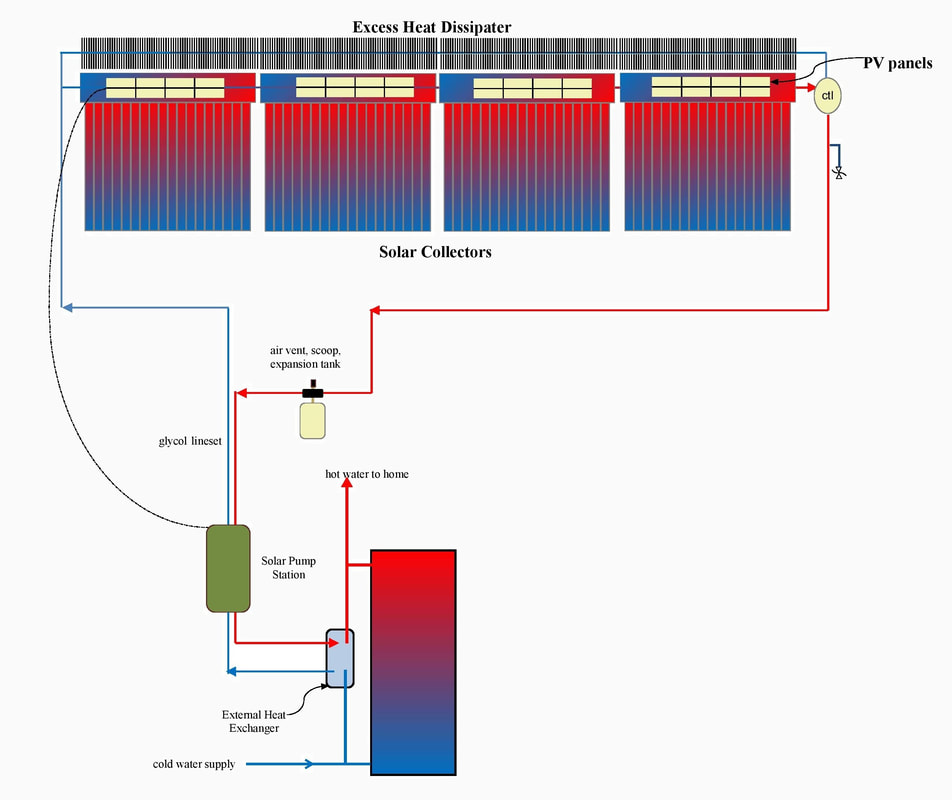|
26 MARCH 2021
External Heat Exchanger vs Solar TankWhen it come to the parts of a solar thermal system, solar thermal panels and collectors tend to get the lion’s share of attention. However a place to store your heated water is one of the most important parts of a solar thermal system; it doesn’t matter how much heat you generate if you can’t store it for when it’s needed. Usually a hot water tank with internal coils is chosen for this task, however these can be expensive and if you’ve already got a water heater then you might not have space in your utility room for a solar tank. The alternative to a solar tank is to use an external heat exchanger, but what exactly is an external heat exchanger and what are the pros and cons of using one?
WHAT'S AN EXTERNAL HEAT EXCHANGER?An external heat exchanger is a bulky metallic object that mounts to the side of a hot water tank and transfers the heat generated by your solar thermal collectors to the water inside your hot water tank. Whereas solar tanks contain one or two internal coils that transfer the solar generated heat to the water within, an external heat exchanger mimics the action of these internal coils from the outside of your tank; hence the external in its name, and contrasted with the internal heat exchanging coils of a solar tank. This allows you to use just about any hot water tank for your solar thermal system.
PROS AND CONSNot needing a specialised solar tank comes with two distinct advantages. Firstly, it can substantially reduce the cost of your system. Whereas internal coil hot water tanks cost at least a thousand dollars, an external heat exchanger is only a few hundred dollars; an order of magnitude smaller. Secondly, it doesn’t occupy any space that isn’t already occupied by your existing hot water tank. If space is an issue and you don’t want to replace your current tank then you’ll still be able to install your system with an external heat exchanger.
Unfortunately, it’s not all sunshine. External heat exchangers have several disadvantages, the main one being that they are simply not as efficient at transferring heat. Because they’re located outside the hot water tank they lose a lot heat to the air in your utility room. This isn’t so bad if your utility room is cold in winter and could use a little warming up, but it can be undesirable during the hot summer months. This issue is compounded by the fact that the bulky nature of external heat exchangers makes them difficult to insulate. They also don’t work well if the water in the tank is preheated. You’ll use a lot more energy preheating the tank because the poor insulation of the external heat exchanger will result in much of the preheat bleeding into the utility room. CONCLUSIONFor these reasons, we encourage the use of solar tanks wherever possible, despite the cost and space savings you get from using an external heat exchanger. In the long run a solar tank will prove more cost effective due to the increased heat transfer efficiency. However, if your current hot water tank lacks internal coils, you’re not keen on replacing it, and you don’t have room for a second tank, then you can still ‘go solar’ by using an external heat exchanger.
If you are installing an external heat exchanger, here are some best practices to follow in order to get the most from your external heat exchanger:
|
SEARCH
FOLLOW SIMPLE SOLAR
|




